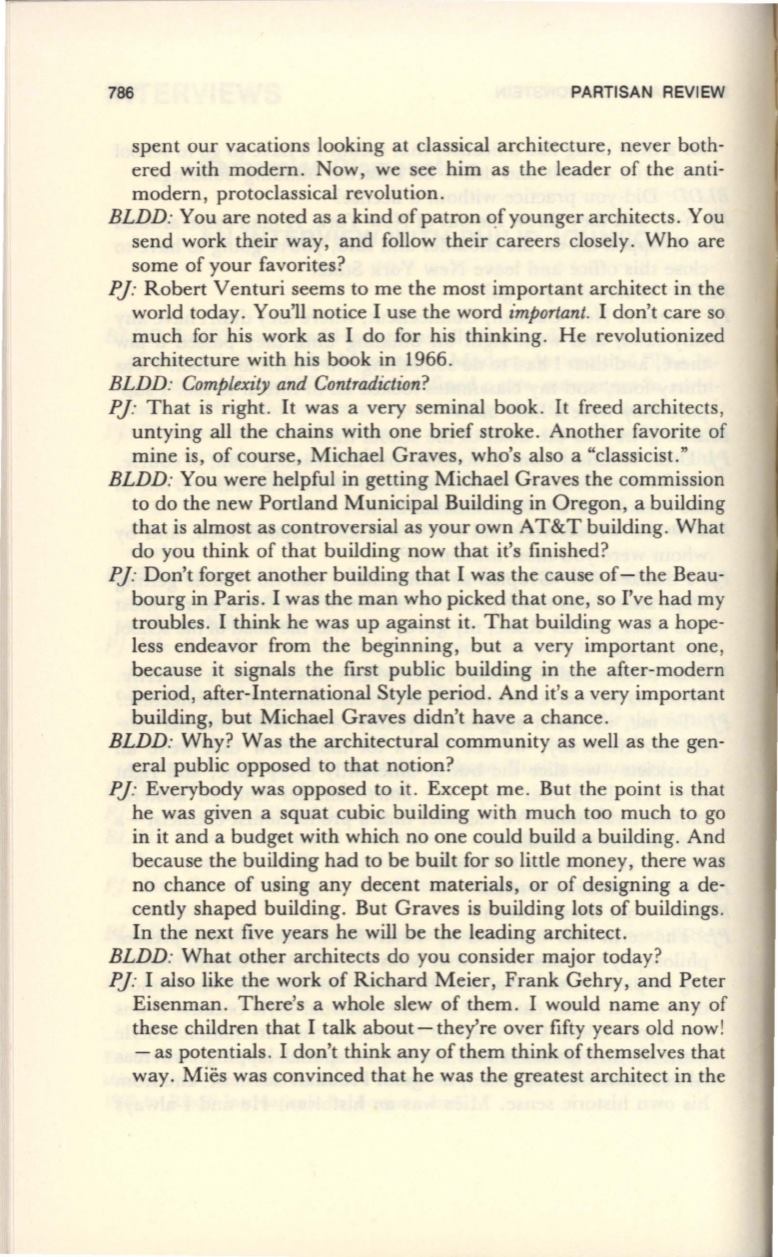
786
PARTISAN REVIEW
spent our vacations looking at classical architecture, never both–
ered with modern. Now, we see him as the leader of the anti–
modern, protoclassical revolution.
BLDD:
You are noted as a kind of patron qfyounger architects. You
send work their way, and follow their careers closely. Who are
some of your favorites?
PJ:
Robert Venturi seems to me the most important architect in the
world today. You'll notice I use the word
important.
I don't care so
much for his work as I do for his thinking. He revolutionized
architecture with his book in 1966.
BLDD: Complexity and Contradiction?
PJ:
That is right.
It
was a very seminal book. It freed architects,
untying all the chains with one brief stroke. Another favorite of
mine is, of course, Michael Graves, who's also a "classicist."
BLDD:
You were helpful in getting Michael Graves the commission
to do the new Portland Municipal Building in Oregon, a building
that is almost as controversial as your own AT&T building. What
do you think of that building now that it's finished?
PJ:
Don't forget another building that I was the cause of- the Beau–
bourg in Paris. I was the man who picked that one, so I've had my
troubles. I think he was up against it. That building was a hope–
less endeavor from the beginning, but a very important one,
because it signals the first public building in the after-modern
period, after-International Style period . And it's a very important
building, but Michael Graves didn't have a chance.
BLDD:
Why? Was the architectural community as well as the gen–
eral public opposed to that notion?
PJ:
Everybody was opposed to it . Except me. But the point is that
he was given a squat cubic building with much too much to go
in it and a budget with which no one could build a building. And
because the building had to be built for so little money, there was
no chance of using any decent materials, or of designing a de–
cently shaped building. But Graves is building lots of buildings.
In the next five years he will be the leading architect.
BLDD:
What other architects do you consider major today?
PJ:
I also like the work of Richard Meier, Frank Gehry, and Peter
Eisenman. There's a whole slew of them. I would name any of
these children that I talk about- they're over fifty years old now!
-as potentials. I don't think any of them think of themselves that
way. Mies was convinced that he was the greatest architect in the


